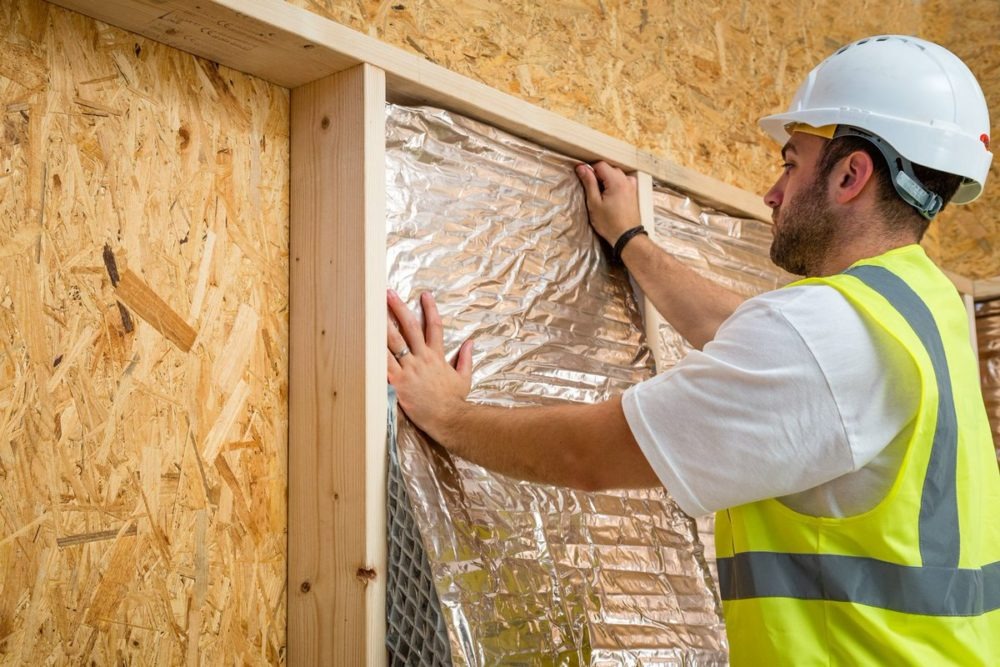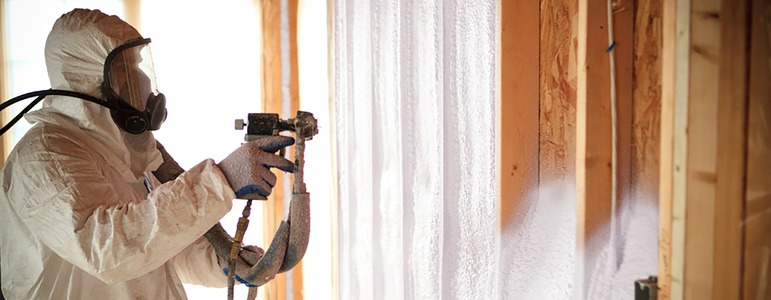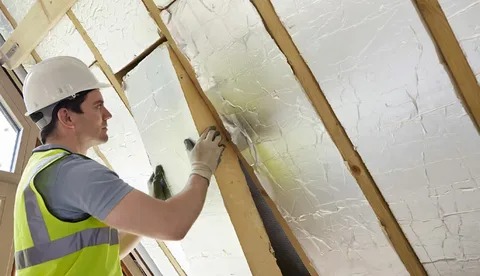Air sealing stops energy waste by blocking the tiny gaps where air escapes from your home. These hidden leaks typically waste 20-30% of your heating and cooling energy, costing you money every month. By sealing these gaps, you create a continuous air barrier that keeps your conditioned air inside while blocking outside air, moisture, and pollutants from entering.
Professional air sealing services work better than just adding insulation because even the best insulation can’t stop moving air. When combined with adequate insulation, air sealing creates a complete thermal boundary that dramatically improves comfort, reduces energy bills by 10-20%, and extends your HVAC system’s life by reducing its workload.
Common Air Leakage Points in Homes
Understanding where air typically escapes helps you target the most important areas:
| Location | Percentage of Total Leakage | Common Issues | Priority Level |
|---|---|---|---|
| Floors, walls, ceiling | 31% | Wall/floor joints, electrical penetrations | High |
| Ducts | 15% | Seams, connections to equipment | High |
| Fireplace | 14% | Dampers, surrounds | High |
| Plumbing penetrations | 13% | Gaps around pipes through walls/floors | Medium |
| Doors | 11% | Weatherstripping, thresholds | Medium |
| Windows | 10% | Frames, meeting rails | Medium |
| Fans and vents | 4% | Bathroom fans, range hoods | Low |
| Electrical outlets | 2% | Gaps around boxes | Low |
Air Sealing Methods and Materials
Different areas require specific sealing approaches:
| Area | Best Materials | Application Method | Durability | Cost Range |
|---|---|---|---|---|
| Window/door frames | Caulk, weatherstripping | Apply around frames; install strips | 2-5 years | $5-$20 per opening |
| Attic penetrations | Spray foam, caulk | Seal gaps around pipes, wires, vents | 20+ years | $10-$30 per penetration |
| Baseboards | Caulk | Apply thin bead between wall and floor | 5-10 years | $3-$10 per room |
| Ductwork | Mastic, metal tape | Apply to all seams and connections | 20+ years | $50-$200 per system |
| Recessed lights | IC-rated covers, foam | Install covers, seal edges | 20+ years | $10-$30 per light |
| Rim joists | Spray foam, rigid foam | Apply 1-2″ thickness | 20+ years | $1-$3 per linear foot |
| Electrical boxes | Foam gaskets | Install behind cover plates | 10+ years | $0.50-$1 per outlet |
Bonus Tip: For the biggest impact, focus on sealing your attic floor and basement/crawlspace ceiling first. These areas often have the largest and most accessible air leaks, offering the best return on your time and money investment.
Benefits of Professional Air SealingAccording to the Department of Energy, professional air sealing contractors combined with proper insulation can reduce heating and cooling costs by an average of $600 per year. This creates a typical payback period of 1-3 years for most homes.
Professional air sealing offers these advantages:
- Comprehensive Testing: Blower door tests find hidden leaks that visual inspection misses
- Proper Material Selection: Experts choose the right products for each application
- Access to Hard-to-Reach Areas: Professionals can access challenging spaces
- Balanced Ventilation: Ensures proper fresh air while eliminating random leaks
- Moisture Management: Prevents condensation issues by addressing the whole house as a system
DIY Air Sealing Projects
Many air sealing tasks are suitable for homeowners:
- Door Weatherstripping: Replace worn strips around exterior doors
- Window Caulking: Apply new caulk where window frames meet walls
- Outlet Gaskets: Install foam gaskets behind electrical outlet covers
- Attic Hatch Sealing: Add weatherstripping and insulation to attic access points
- Baseboards: Caulk gaps between baseboards and floors
Bonus Tip: When caulking, cut the tip of the tube at a 45-degree angle and make it slightly smaller than you think you need. This gives you better control and a cleaner finish. Always clean the area thoroughly before applying caulk to ensure proper adhesion.
Technical Specifications of Air Leakage
Understanding the technical aspects helps you evaluate your home’s performance:
| Measurement | Good Performance | Average Home | Leaky Home |
|---|---|---|---|
| Air Changes per Hour (ACH) | <3 ACH50 | 5-7 ACH50 | >10 ACH50 |
| Equivalent Leakage Area | <80 sq in | 100-200 sq in | >250 sq in |
| Cubic Feet per Minute (CFM) | <1,200 CFM50 | 1,500-2,500 CFM50 | >3,000 CFM50 |
| Annual Energy Waste | <10% | 20-30% | >35% |
| Stack Effect Pressure | 4 Pa per floor | 5-7 Pa per floor | >8 Pa per floor |

Professional air sealing services
Things to Consider Before Making a Decision
Before starting an air sealing project:
- Current Ventilation: Determine if your home has existing mechanical ventilation. Very tight homes may need additional ventilation.
- Combustion Safety: Fuel-burning appliances need adequate air for safe operation. Homes with furnaces, water heaters, or fireplaces require professional assessment before extensive air sealing.
- Existing Moisture Issues: Address any current moisture problems before sealing. Air sealing can sometimes make moisture issues worse if the source isn’t fixed first.
- Budget and Time Constraints: Decide whether to tackle the whole house at once or phase the work. Even partial air sealing delivers benefits.
- Testing Capabilities: Consider whether to invest in a blower door test ($200-$400) to identify leaks and measure improvement.
Air Sealing Process
A typical air sealing project follows these steps:
- Assessment: Identify leakage points through visual inspection or blower door testing
- Prioritization: Focus on the largest or most accessible leaks first
- Material Selection: Choose appropriate sealing materials for each area
- Application: Apply caulk, foam, weatherstripping according to best practices
- Verification: Retest with blower door or check visually to confirm improvement
- Ventilation Check: Ensure adequate fresh air exchange
Air Sealing FAQ
Will air sealing make my house too tight?
No, modern homes benefit from controlled tightness. The goal is to eliminate random air leaks and then provide fresh air through intentional means like mechanical ventilation. This approach improves air quality, comfort, and efficiency. Even after thorough air sealing, most homes still have adequate natural air exchange.
How do I know if air sealing was effective?
The most accurate method is a before-and-after blower door test, which measures air leakage in CFM (cubic feet per minute). Without testing equipment, you’ll notice reduced drafts, more consistent temperatures, less dust, and lower energy bills. Most homeowners see a 10-20% reduction in energy costs after comprehensive air sealing.

Air Sealing Services
Should I air seal or insulate first?
Always air seal before adding insulation. Air movement through insulation dramatically reduces its effectiveness – like wearing a knit sweater on a windy day. Sealing first ensures your insulation investment delivers its full benefit. In existing homes, focus on accessible air sealing opportunities before adding more insulation.
Is air sealing worth the investment?
Yes. Air sealing typically delivers the best return on investment of any energy improvement. With material costs of $200-$500 for DIY sealing (or $800-$1,500 for professional work), most homes recoup the investment through energy savings within 1-3 years. The comfort improvements and reduced HVAC wear add further value.
Can air sealing help with allergies and indoor air quality?
Yes. By reducing random air infiltration from crawl spaces, attics, and wall cavities, air sealing blocks pathways for pollen, dust, and mold spores. This gives you better control over your indoor air quality, especially when combined with proper filtration and ventilation systems.
Make the Right Decision
Air sealing forms the foundation of an energy-efficient home by eliminating wasteful air leakage that bypasses insulation and creates comfort problems. The most effective approach addresses the whole house as a system, sealing leaks from top to bottom.
Start with a professional air sealing contractor to identify your home’s specific leakage patterns. Then create a plan that prioritizes the most significant leaks first. Whether you choose DIY sealing for accessible areas or professional services for a comprehensive approach, air sealing delivers immediate benefits in comfort.
Reviewer: Samuel Harris has worked across various roles in spray foam insulation over 11 years. His review focused on how businesses can better present their services to both new and returning clients.






